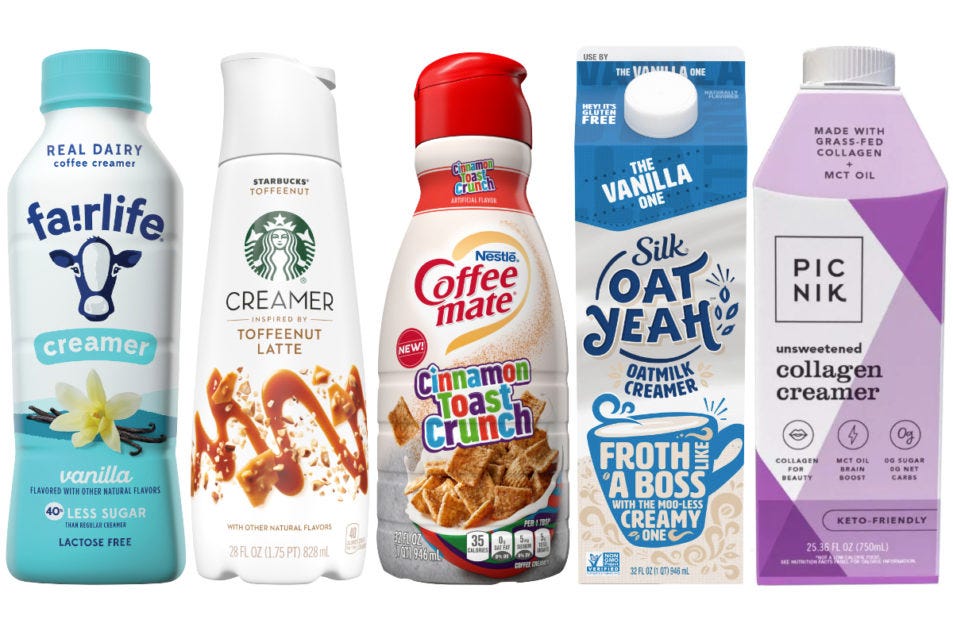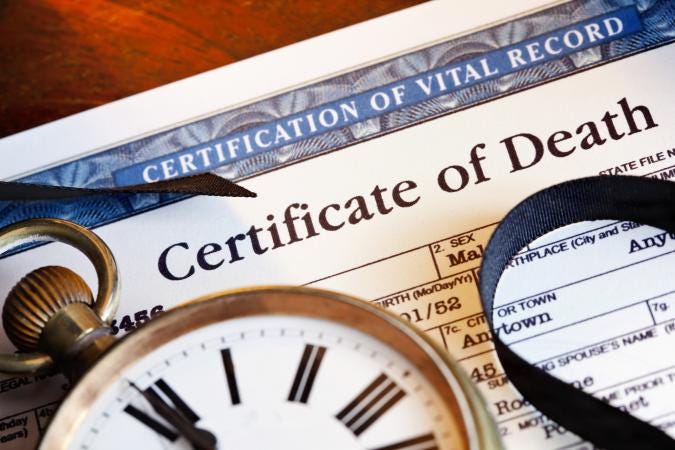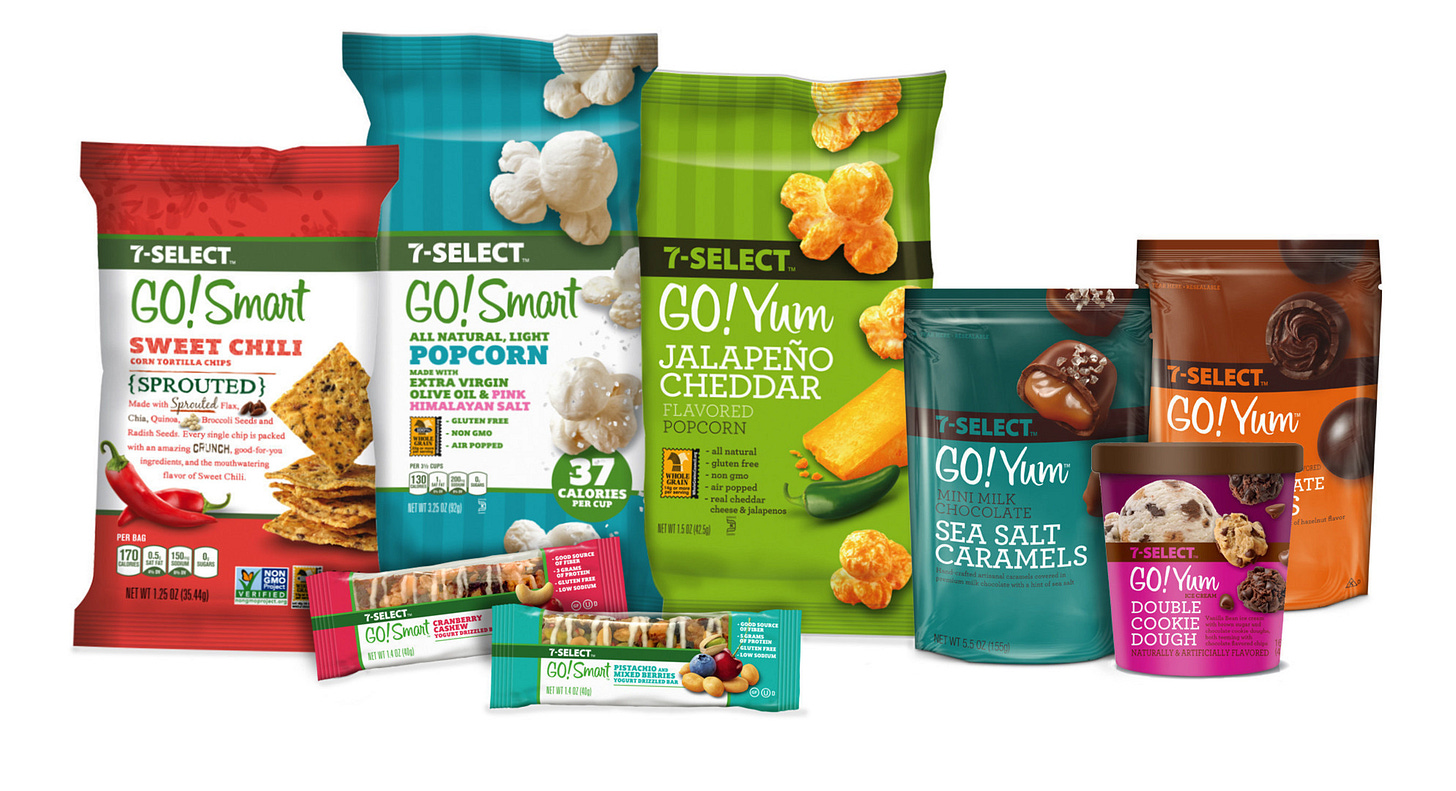3 Things: Subscription Coffee Creamer, Digital Death, Italic for Food/Makeup
Happy Sunday! Each edition of 3 Things will contain a dive into 3 rabbit holes I’ve found myself going down recently. Subscribe to get each week’s edition straight to your inbox and if you enjoy it, please share! This past week, I’ve been thinking a lot about:
Subscription Coffee Creamer
Digital Death
Italic for Food/Makeup
1. Subscription Coffee Creamer
There are very few things that are truly daily rituals for the vast majority of the population, but coffee/tea drinking would definitely be one of them. 64% of Americans drink coffee daily (and only rank 25th in terms of worldwide coffee consumption) and 79% of people brew coffee at home. In my first job out of college, I was working at a startup and would watch people roll in each morning and spend the first 10 minutes of the day making their perfect cup of joe. For most, the base is either brewed coffee or shots of espresso but what goes in it can take on innumerable combinations. You have whole milk, 2%, skim, half & half, almond milk, hemp milk, sory milk, oat milk, and more. Then you have sugar, brown sugar, raw sugar, stevia, monk fruit sugar, sweet & low, and many other forms of sweeteners. And finally, many people enjoy a flavor like chocolate, caramel, hazelnut, or something festive like pumpkin spice.
There has been a wave of personalization and customization that has swept through consumer products from haircare like Prose and Function of Beauty to sneakers with Nike by You to skincare like Proven or Curology. On the food side, I used to send Chocomize customizable chocolate bars as gifts. Like haircare and skincare, coffee creamer is a perfect natural subscription product as it’s a consumable that has daily usage. A site could allow a user to select their base dairy or non-dairy milk/cream, choose their sweetener and amount of sweetness, and add a flavoring. A custom label would be not only fun but perfect for office or co-working fridges so no one will steal your creamer. You would then select how many cups of coffee you drink a day and how milky you drink your coffee and a custom subscription cadence would be set. A package would continue to show up right on time at your door ensuring you always have your perfect daily cup(s) of coffee! The timing right now is great as the rapid rise of e-commerce during 2020 has poured tons of money and smart people into the e-commerce infrastructure space so doing all of the ordering and fulfilment for this is significantly easier now than it ever was before.
2. Digital Death
While end of life is not a subject most people like to think or talk about, the reality is that we are all going to die and during our lives, we will deal with death on numerous occasions. Dealing with the death of a loved one is an extremely chaotic time that results in much unnecessary stress and a tremendous amount of money. It’s hard enough dealing with the body, a funeral, and the physical assets and estate but in modern times, the aging generations now have a multitude of digital accounts tied to their identity as well. The first thing that needs to happen is obtaining a death certificate which is usually prepared by a medical examiner and then filed with the state or county vital records office. You then need to purchase (yes purchase) multiple copies which are used to close the deceased estate, insurance policies, and other accounts like bank accounts, any loans like a mortgage, pensions, phone plan, utilities, and much more.
When I think about the number of digital accounts I currently have, I couldn’t even begin to count. The most important ones are things tied to any form of money or payment and even then I have multiple banks, investment accounts, 401ks, trading accounts, crypto wallets, and about 20+ monthly subscriptions and bills for everything from my internet to Netflix and Audible. In 2017, I dove headfirst into the world of blockchain and crypto and started working at ConsenSys building applications of all types on top of Ethereum. One of the areas I explored was using blockchain to help streamline processes associated with end of life. It begins with digitizing and tokenizing a death certificate which can be used as an immutable digital record that all associated accounts can query and point to. Ethereum offers the concept of smart contracts which means that you can program various chains of events to occur when certain “signatures” are applied to the contract. In this case, when the required parties, say a medical examiner, a representative of the state, and a next of kin all sign the smart contract, the digital death certificate can be created and all verifiable accounts associated with that person’s identity (email, phone number, social security) can be identified and properly transferred, closed, or appropriately handled. Now, there are a lot of challenges here including the number of parties involved who would all have to be on board and trust this process. In addition, all accounts with a person need to be identified and accessible by this solution. Given that most of us now use something like 1Password or Lastpass to manage all of our passwords, I can see the creation of a will or trust as a compelling time to audit and aggregate all accounts and add them to a platform for this use case, especially as even the older generations become more and more tech savvy.
3. Italic for Food/Makeup
For some people, the brand label is more important than the look or the fit of a piece of clothing. For others, they want high quality but don’t want to pay brand prices. Italic launched in 2018 with the insight that if you cut out the middle man, in this case the brands, and work directly with the manufacturers of luxury products like handbags, eyewear, apparel, shoes, and accessories, you can provide consumers with significantly lower prices for quality goods coming from the same facilities that work with brands like Prada, Christian Louboutin, Givenchy, and EssilorLuxottica. They’ve cleverly evolved the business model to be a membership model similar to Costco where you pay a $120/yr upfront membership which gives you access to their catalog of products and discounts. This gives the company immediate cash and CAC payback and also encourages customers to purchase more products. Unlike Costco who makes nearly all of their profit from membership dues, I’d imagine Italic makes more of their revenue from margins on goods sold but the membership model incentivized each party in exactly the right way.
While food and beverages don’t have the same price points as a designer handbag or shoes, they are consumables that illicit consumer preference and have a significantly higher rate of purchase. Addicted to that $6 coconut water or $14 jar of almond butter? A similar concept of Italic can be applied to high-end food and beverage products. You join a marketplace paying a membership fee to get access to unbranded products that are produced at the same places as the expensive products you’ve been buying. This is similar to what grocery chains do with private label brands like 365 for Whole Foods but instead of focusing on the basics, this would focus on the fancier food and drink and cut out the physical retail and the costs and distribution associated with that. Another category that makes a lot of sense to me for this model is makeup as it is a notoriously high-margin product with very little differentiation. The reason so many celebrities and influencers are able to spin up their own beauty brands is that makeup is commoditized at this point and many are using the same manufacturers and just providing different packaging, labels, and then marketing it under their name. Given the margin structure, removing the brand and going DTC could offer customers extremely low prices on another set of products that naturally lead themselves to subscription.
That’s all for today! If you have thoughts, comments, or want to get in touch, find me on Twitter at @ezelby and if you enjoyed this, please subscribe and share with a friend or two!
~ Elaine





